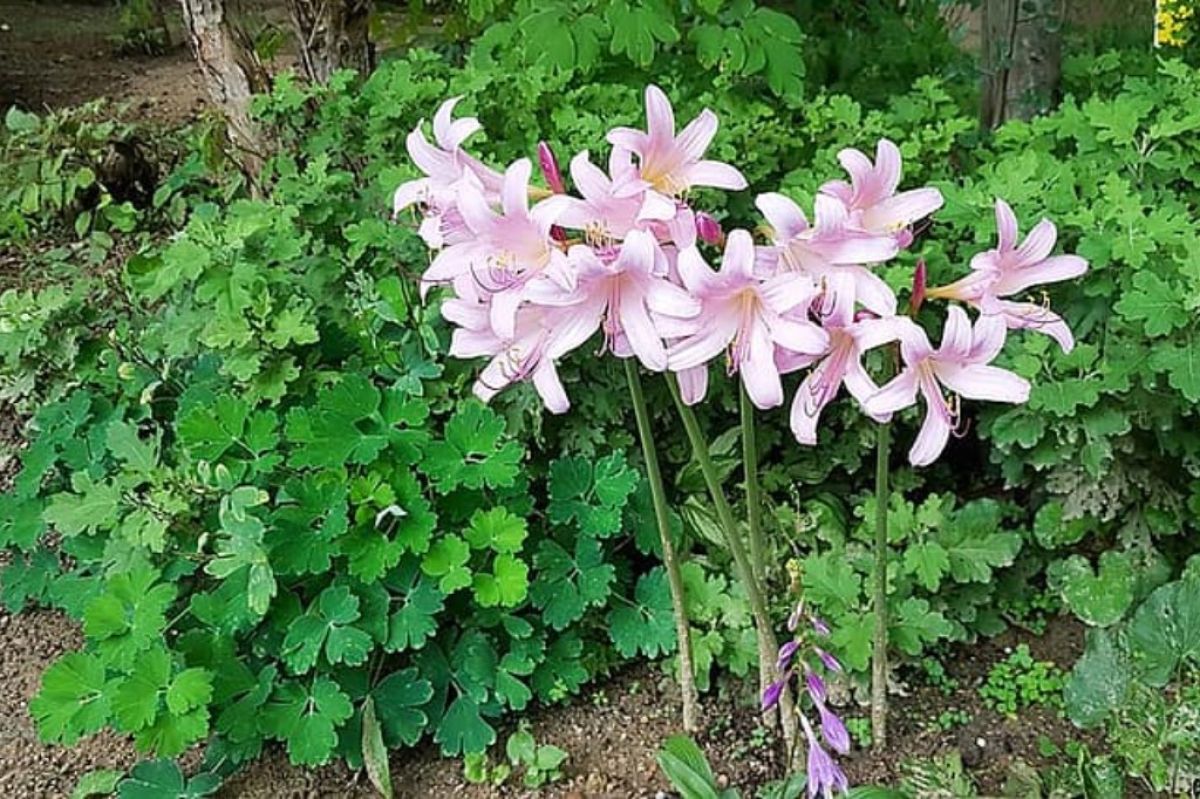The strap-like leaves appear in the spring, and then by May, the entire plant goes dormant until August. The flower stalks can grow as tall as 24 inches, and they usually are topped by a cluster of 4-7 flowers.
The surprise lily is aptly named, and the plant is also called “naked lady” because there are no leaves by the time it blooms. This plant is very easy to grow, and it will tolerate shade as well as sun and grows from bulbs, which increase over time. They tend to hop around the garden, and I always wonder whether animals help disperse them over time. The bulbs can be dug and divided about every five years.
This durable plant comes originally from Japan, and it is related to the amaryllis lily. The flowers are such a pleasure when they appear, as if by magic, towards the end of a hot, dry summer when many other plants seem exhausted.
Other names for this lovely plant are magic lily, spider lily, resurrection lily, and pink flamingo lily. One can sometimes find the bulbs at plant swaps held by garden clubs, or get some from a friend’s garden, so they are economical as well as easy care.
This is Moya Andrews and today we focused on Lycoris.










